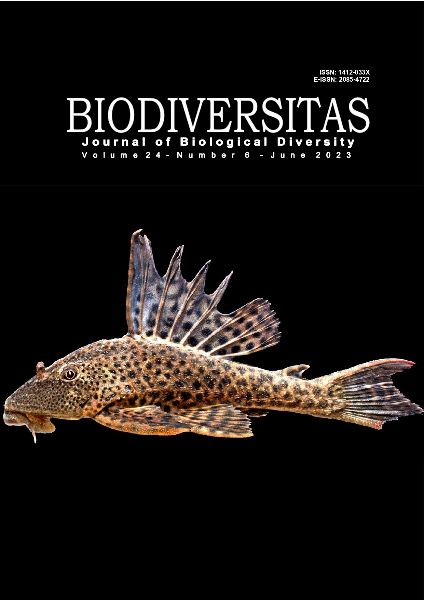Genetic stability analysis associated with salt stress and salicylic acid in fenugreek (Trigonella foenum-graecum) plants
##plugins.themes.bootstrap3.article.main##
Abstract
Abstract. Alhasnawi AN. 2023. Genetic stability analysis associated with salt stress and salicylic acid in fenugreek (Trigonella foenum-graecum) plants. Biodiversitas 24: 3601-3608. Salt damage to plants has been attributed to a combination of many factors like the accumulation of toxic metal ions or osmotic stress. This study attempted to understand the mitigating effects of the salicylic acid (SA) treatment on the salt-stressed seed germination ability of the fenugreek plants (Trigonella foenum-graecum); SA pre-treatment along with the salt tolerance capacity have also been tested. The effects of salinity and applied SA on biochemical traits and genetic stability of plantshave been estimated in this study. Respective molecular and biochemical changes occurring in plants as well as genetic analysis have been performed. The results indicated that exogenous application of SA(0.4 mmol) improved the biochemical traits in the seedlings. The evaluation of the genetic stability of the plants was also conducted. Whereas DNA marker-based genetic stability estimates are considered a reliable, accurate, and advanced technique.The Inter-Simple Sequence Repeats (ISSR) analysis has been performed with the help of 7 ISSRs primers. The 6 ISSRs primers generated 54 fragments in total, with an average of 4.5 bands for every primer. The ISSR did not reveal any polymorphic bands. Finally, it has been concluded that exogenous SA can be effectively used as a potential growth regulator for improving the biochemical traits and salinity stress tolerance of the fenugreek plants and stimulating its medicinal properties. Furthermore, ISSR markers were seen to be a good tool as potential diagnostic markers for testing the genetic stability of plants.

